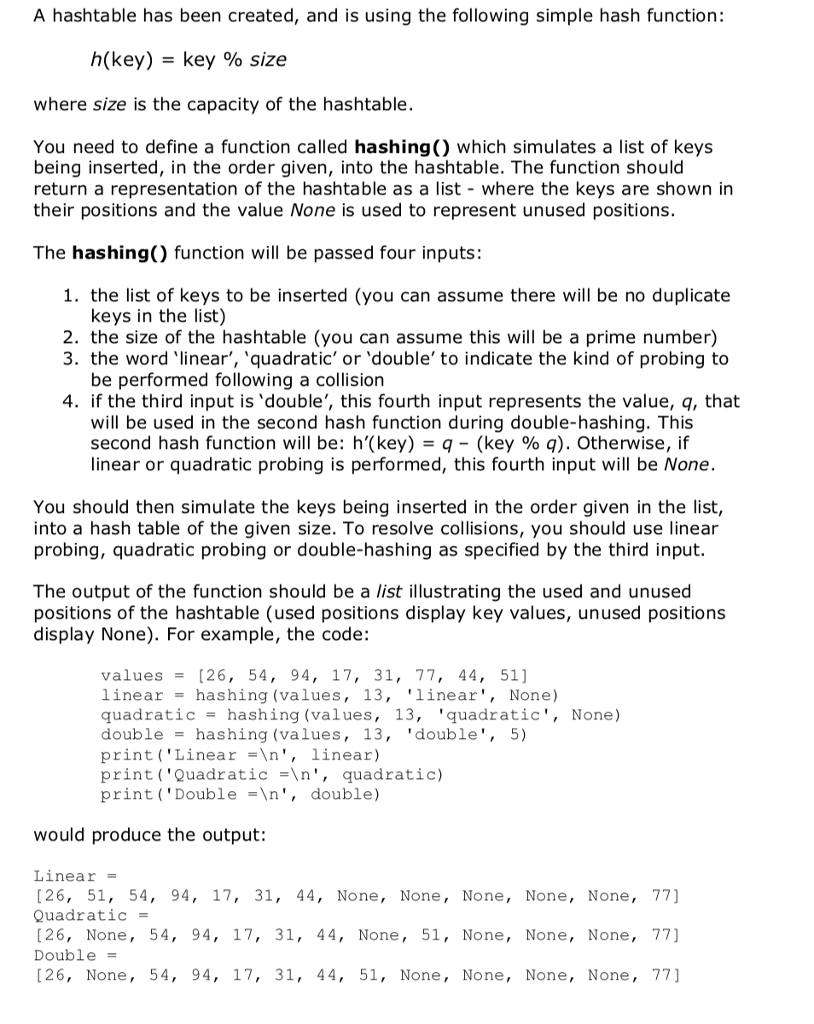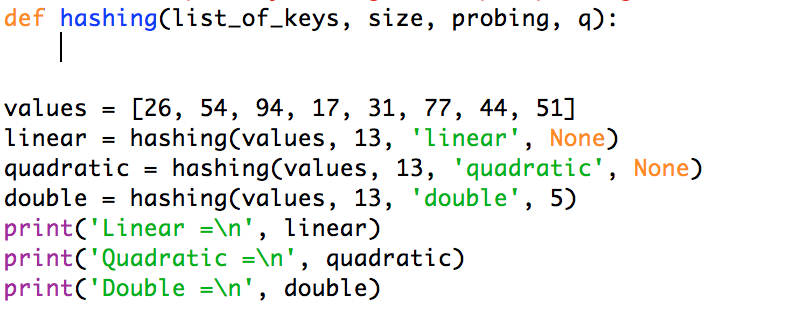Answered step by step
Verified Expert Solution
Question
1 Approved Answer
Must be done in python. You need to complete the hasing function. Information + Question: Code Given (Please complete the hasing funtion) A hashtable has
Must be done in python.
You need to complete the hasing function.
Information + Question:

Code Given (Please complete the hasing funtion)

Step by Step Solution
There are 3 Steps involved in it
Step: 1

Get Instant Access to Expert-Tailored Solutions
See step-by-step solutions with expert insights and AI powered tools for academic success
Step: 2

Step: 3

Ace Your Homework with AI
Get the answers you need in no time with our AI-driven, step-by-step assistance
Get Started


